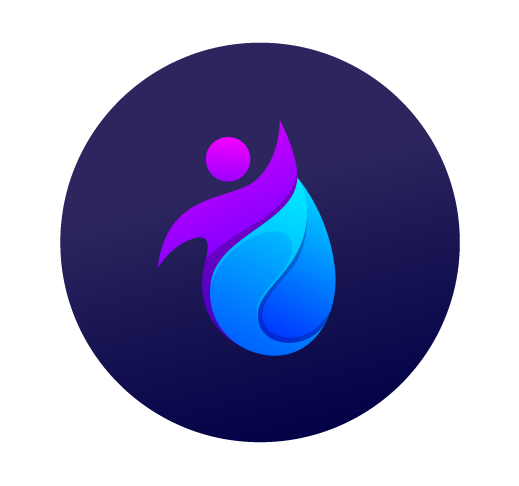The job search can feel like waiting for a bus that never comes—uncertain and even a little nerve-wracking. After sending out applications, the urge to follow up grows stronger.
Standing out in a crowded job market requires taking every step possible, including how and when you follow up with employers. This approach can open doors that remain closed for others.
By reading this in-depth guide, you’ll discover practical strategies, clear examples, and ready-to-use scripts for a follow up that gets noticed—without feeling awkward or pushy.
Taking Control: Following Up Gives You the Edge
Sending your resume is only the first move. Employers appreciate candidates who show professionalism and initiative by following up, as this signals real interest and persistence.
A carefully timed follow up demonstrates attention to detail and respect for the recruiter’s schedule. This behavior can push an application closer to the top of the candidate list.
Scripted Follow Up Emails That Work
Starting your follow up email with gratitude sets the right tone. “Thank you for considering my application for the marketing coordinator role. I am very interested in this position.”
Move on with a direct question: “Could you please advise on the timeline for next steps? I remain very enthusiastic about the opportunity to join your team.”
End with a polite note: “Please let me know if you need any additional information. I appreciate your time and look forward to your response.” Copy this format directly.
Timing Your Follow Up Message
Wait five to seven business days after submitting an application before sending a follow up. Employers rarely respond quicker, especially for popular job postings.
Send your follow up mid-morning between 10 and 11 AM in the company’s time zone. Recruiters tend to catch up on emails at this time and haven’t been distracted by afternoon meetings.
If no response after your first follow up, wait at least a week before attempting again. A second message can be shorter: “Just checking on the status of my application.”
| Follow Up Method | Best Timing | Pros | What to Do Next |
|---|---|---|---|
| 5-7 business days post-application | Direct, professional, easy to track | Send personalized, concise message | |
| LinkedIn Message | After email, or if email unknown | Shows initiative, builds network | Keep short, reference application details |
| Phone Call | After two emails without response | More memorable, immediate answer | Prepare script, be brief |
| Company Portal | If portal offers messaging | Stays on record, reaches HR directly | Use portal feature, track sent messages |
| In-Person Drop-In | Only for small teams, rare cases | Very personal, can create impression | Be respectful, keep it brief, only if appropriate |
Crafting High-Impact Messages for Every Stage
Every follow up in your job search builds your professional reputation. Writing clear, precise messages helps busy recruiters remember your name and interest in the role.
A follow up message isn’t just a check-in; it reaffirms your skills and enthusiasm. Employers, swamped with applications, recall details from memorable, targeted notes.
Personalizing Your Follow Up for Each Employer
Make your follow up feel genuine by referencing something unique from your application or the company’s mission. “I admire your commitment to sustainability—my background aligns with those priorities.”
Personal touches show you’ve done your research and increase your chances. Reinforce your main qualification each time, tying it to the company’s specific needs.
- Mention the job title and posting date to jog the recruiter’s memory. This saves them time and demonstrates organization on your part.
- Include a brief line about a company value or recent news. Connect your experience to something they care about, increasing your message’s relevance.
- Echo a phrase from the job ad or an interview. This signals attentive reading and real alignment with their needs.
- Keep your follow up message under 150 words so busy staff can respond quickly. Conciseness increases the chance of a reply.
- End with a specific request: “If there’s a convenient time for us to speak, I’d be glad to chat.” This shows flexibility and keeps the process moving.
A personalized follow up builds trust. Recruiters appreciate that extra effort and attention to detail.
Re-Engaging if You’ve Had No Response
Politeness makes a difference on your second follow up attempt. “I wanted to touch base as I remain excited about the role and hope for an update.”
Avoid sounding impatient or entitled, but do show persistence and continuous motivation toward the open position. Your ongoing interest can make you stand out.
- Use a respectful reminder—“I understand you’re busy and appreciate your time.” This helps maintain goodwill on future follow ups.
- Restate your main fit for the job briefly, even if you said so earlier. A second reminder refreshes the recruiter’s memory.
- Express willingness to discuss further or provide more info: “I’m happy to clarify my experience or send references.” This invites ongoing communication.
- Use neutral closing lines: “If I should continue to wait or check back later, please let me know.” Give them an easy way to guide next steps.
- Thank them again—sincere gratitude fosters positive responses and makes you more memorable to the hiring manager facing many emails.
A measured, professional follow up sequence makes the job search feel more proactive and less anxiety-inducing.
Making Connections With Recruiters who Respond
When a recruiter replies to your follow up, your continued professionalism determines how the job process unfolds. Strong communication builds positive momentum for interviews and offers.
Every message exchanged is a new chance to reinforce your candidacy. A little extra effort can tip the scales in your favor.
Responding Promptly and Graciously
If you receive a response to your follow up, reply within one business day. Quick replies show you are interested and reliable—two qualities recruiters prize.
Express appreciation, address any questions, and reiterate your enthusiasm. A direct “Thank you for your reply—I look forward to learning more” works well here.
If next steps are outlined, confirm you understand them. “I look forward to hearing from HR about scheduling.” Keeping communication clear avoids misunderstandings and delays.
Continuing the Relationship if Not Selected
If the answer is a rejection, respond professionally to leave the door open for future opportunities. “Thank you for considering my application—I’d welcome the chance to apply again.”
Add a personal touch if you enjoyed the process: “I appreciated learning more about your team and mission. Please keep my resume on file.”
This simple follow up strengthens your professional network even after a no, which can help the next time a job opens.
Setting Uphill Tasks: Handling Silence From Employers
Not hearing back after multiple follow up attempts can feel discouraging, but it’s part of every job search. Staying strategic keeps your momentum and confidence strong.
Keep your responses professional and never express frustration. Hiring processes can stall for weeks for reasons unrelated to your application.
Knowing When to Move Forward
After two to three attempts with no answer, it’s wise to pause on follow ups. Shift focus onto other applications rather than continuing to pursue a silent employer.
Sample message: “I understand you are managing a high volume of applicants. If I do not hear back, I wish you all the best.”
This shows self-respect and leaves a positive final impression. Unanswered follow up messages should never turn negative.
Tracking Every Touchpoint in Your Search
Record each follow up, method, and outcome in a simple spreadsheet or notebook. This keeps your search organized and makes it easier to spot trends over time.
Tracking helps you avoid redundant or excessive follow ups, which can risk your prospects. Aim for a disciplined record-keeping process for all your job applications.
The table below compares key tracking approaches for job seekers:
| Tracking Method | Setup Time | Visibility | Takeaway |
|---|---|---|---|
| Notebook | Minimal | Manual, private | Good for small searches—write dates and details by hand |
| Spreadsheet | Low | Filterable, searchable | Track dates, contacts, outcomes for easy overview—works for most |
| Online Tracker App | Medium | Accessible on any device | Syncs across job boards, alerts you to follow up times—best for high-volume |
| Email Flagging | None (built-in) | Limited to emails | Flag sent applications, schedule follow up reminders in your inbox |
| Paper Calendar | Minimal | Visual reminders | Mark follow up deadlines, see open loops at a glance |
Building Employer Relationships That Outlast One Job
When you follow up with care, you leave a mark not just for this job, but for future roles as well. Recruiters remember persistence and professionalism.
Each follow up is an investment in your network and reputation, not only a tactic for landing a specific job interview.
Networking for Future Opportunities
If rapport develops, ask permission to stay in touch even if not selected. Be specific: “May I connect with you on LinkedIn for future possibilities?”
This simple follow up bridges the gap between candidate and professional colleague. Over time, networks open doors to jobs not yet posted.
Keep your outreach occasional, relevant, and value-oriented. Congratulate former contacts on achievements or comment thoughtfully when they post updates.
Following Up After Informational Interviews
For informational interviews, your follow up is a chance to thank and add value: “I appreciated our conversation about your company’s engineering projects—your advice gave me new focus.”
Reference specific tips they shared and offer a brief update on your progress. This builds mutual respect and future goodwill as you continue your job search journey.
Smart follow up etiquette in these contexts keeps you top of mind with professionals in your chosen industry, even after the formal process ends.
Conclusion: Turning Follow Up Into Long-Term Success
Each follow up in your job search is a chance to remind employers of your unique value and dedication. Proactive communication unlocks opportunities others miss.
Over time, persistence and thoughtful follow up boost your confidence and network. The practice brings results for your immediate application and beyond.
Use scripts, timeframes, and genuine interest to stay memorable and create career momentum. Turn every follow up into a meaningful step toward your job goals.



